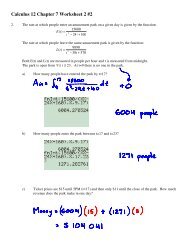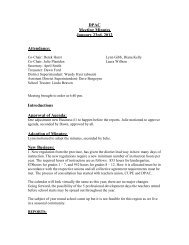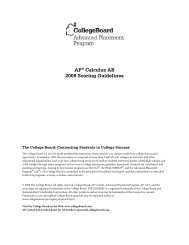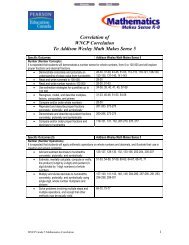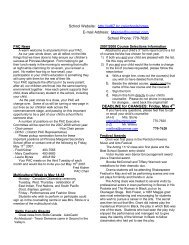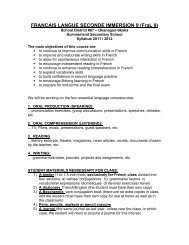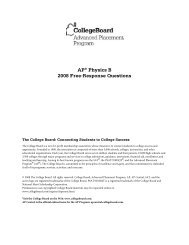Mathematics 30 June 1999 Grade 12 Diploma Exam
Mathematics 30 June 1999 Grade 12 Diploma Exam
Mathematics 30 June 1999 Grade 12 Diploma Exam
You also want an ePaper? Increase the reach of your titles
YUMPU automatically turns print PDFs into web optimized ePapers that Google loves.
Use the following information to answer the next question.<br />
A student is given the partial graph of a third-degree polynomial function,<br />
y = P(x), as shown below. The x-intercepts of the graph are – 4, 0, and 2.<br />
y<br />
35<br />
<strong>30</strong><br />
25<br />
20<br />
15<br />
10<br />
5<br />
–6 –5 –4 –3 –2 –1<br />
–5<br />
1 2 3 4 5 6<br />
–10<br />
–15<br />
–20<br />
–25<br />
x<br />
3. In order to determine the equation for P, the student will also require the<br />
A. range when x > 2<br />
B. value of the y-intercept<br />
C. values of any additional x-intercepts<br />
D. coordinates of a point on the graph of y = P(x), such that y ≠ 0<br />
4. A third-degree polynomial function is given by P(x) = (x – 2)(x + 3)(x + 4).<br />
If another polynomial function Q(x) = kP(x), k > 1, then the graph of y = Q(x)<br />
must have<br />
A. a y-intercept that is less than –24<br />
B. a y-intercept that is greater than –24<br />
C. k more x-intercepts than the graph of P(x)<br />
D. x-intercepts different from those of the graph of P(x)<br />
2






